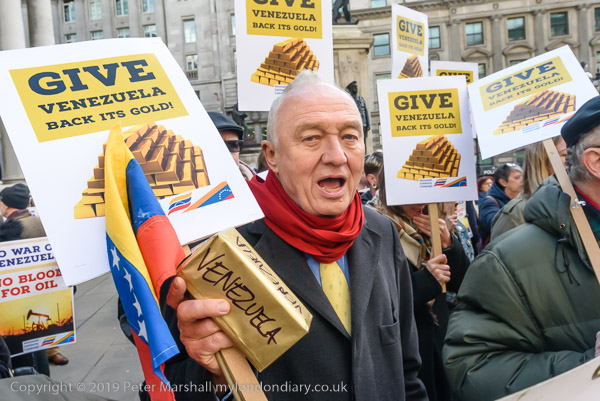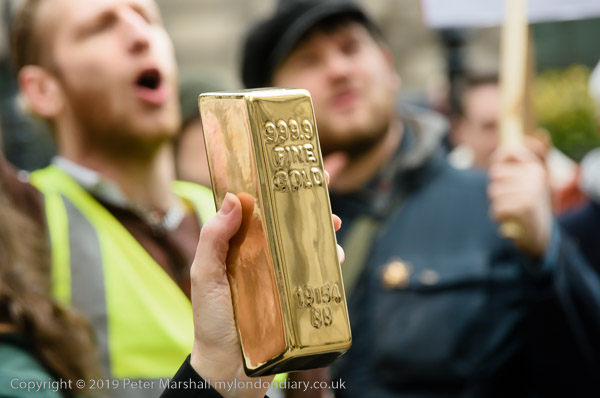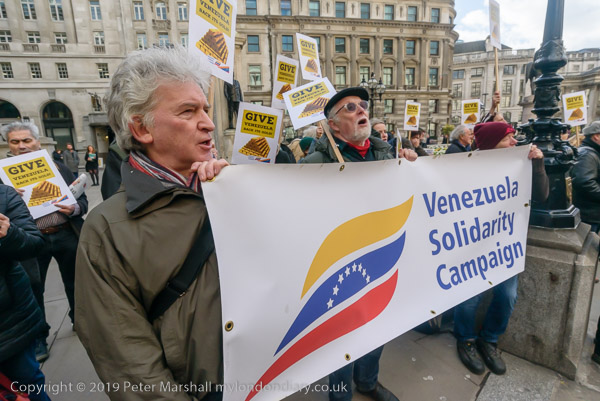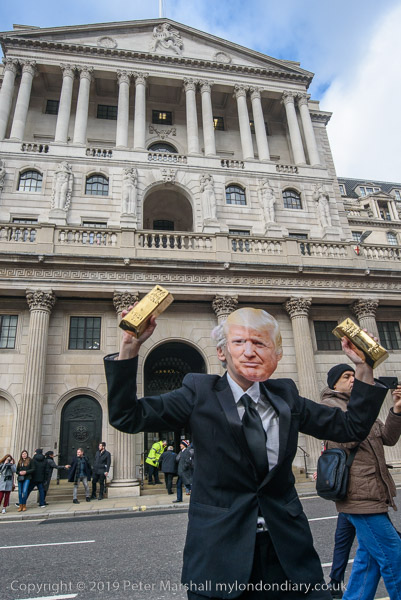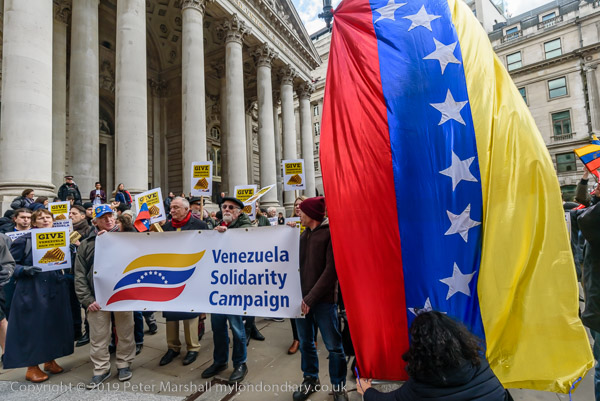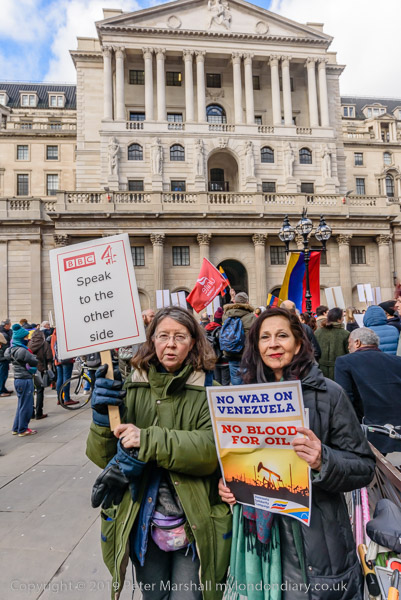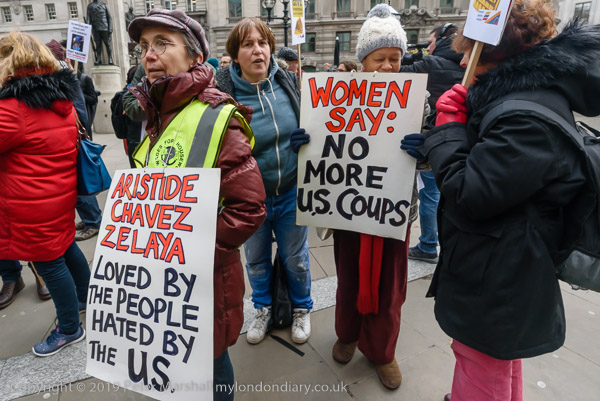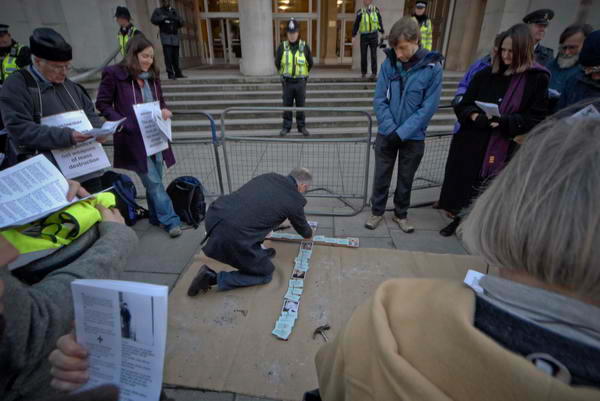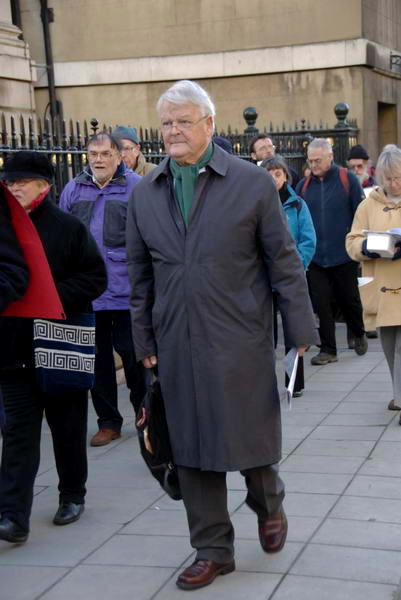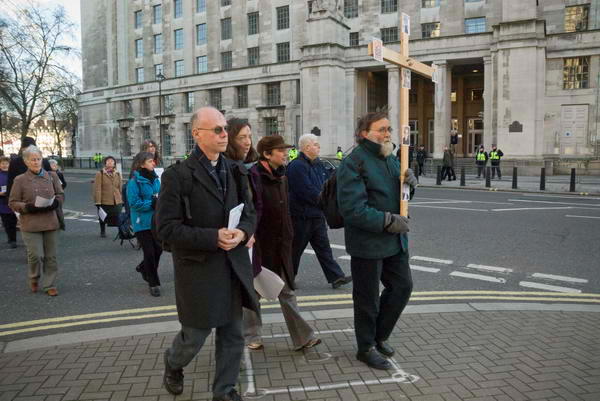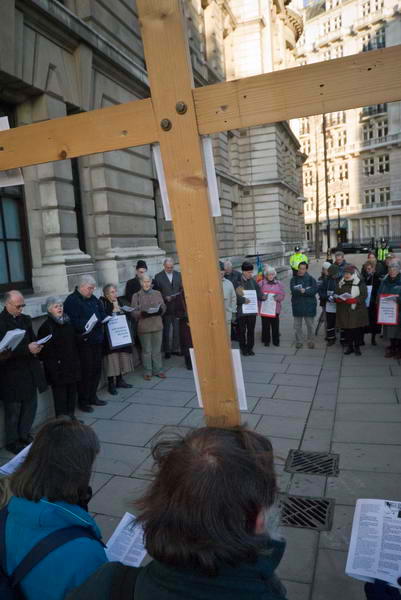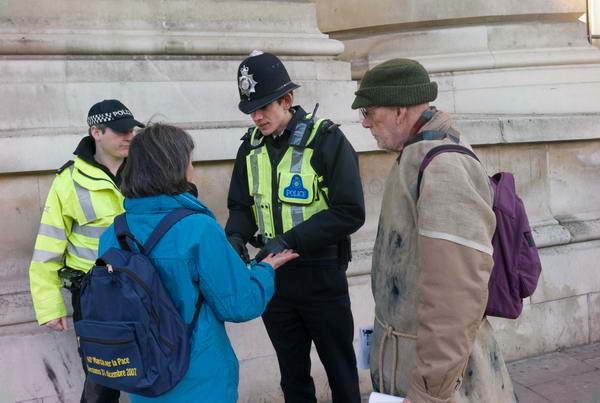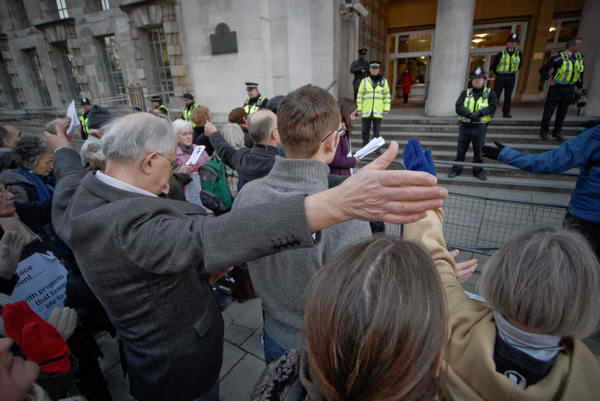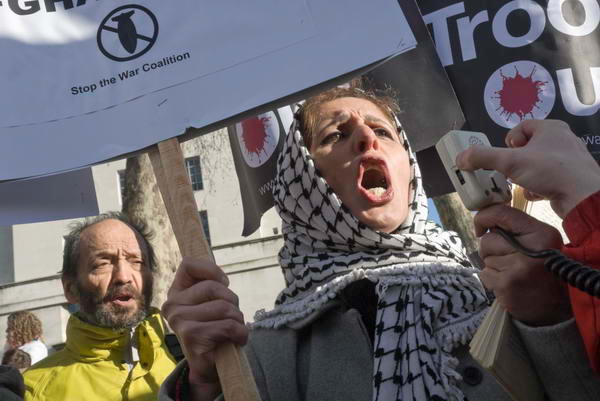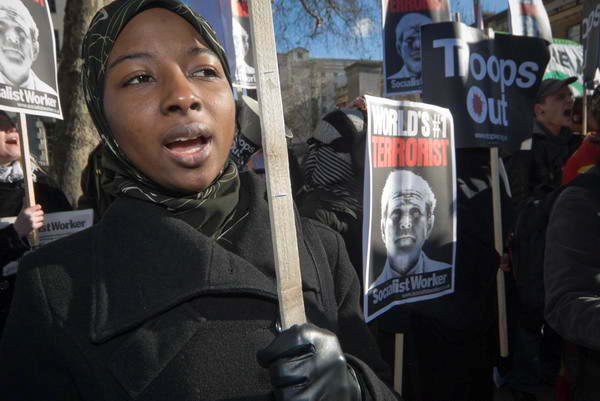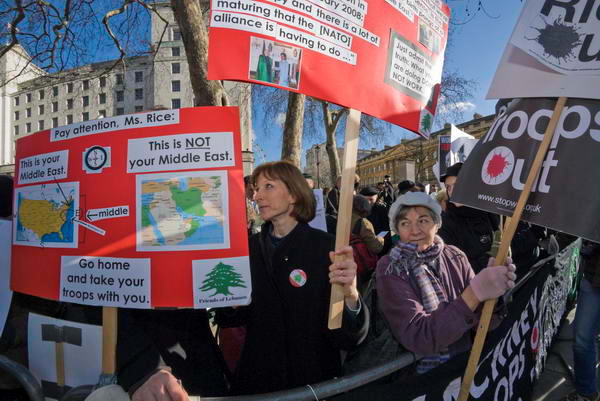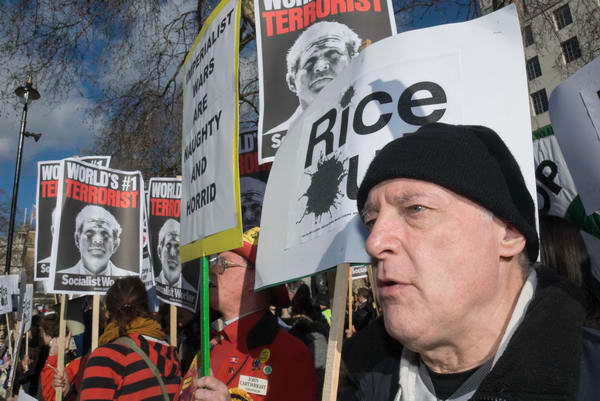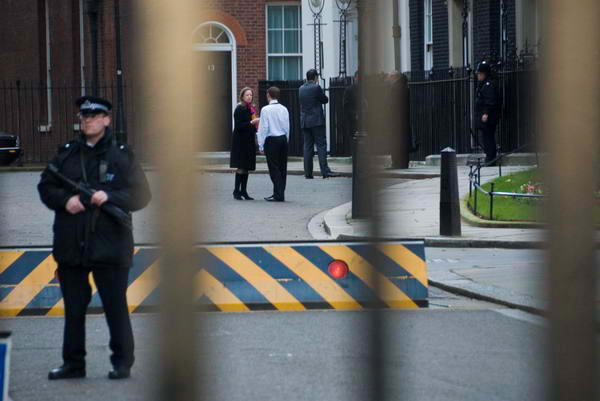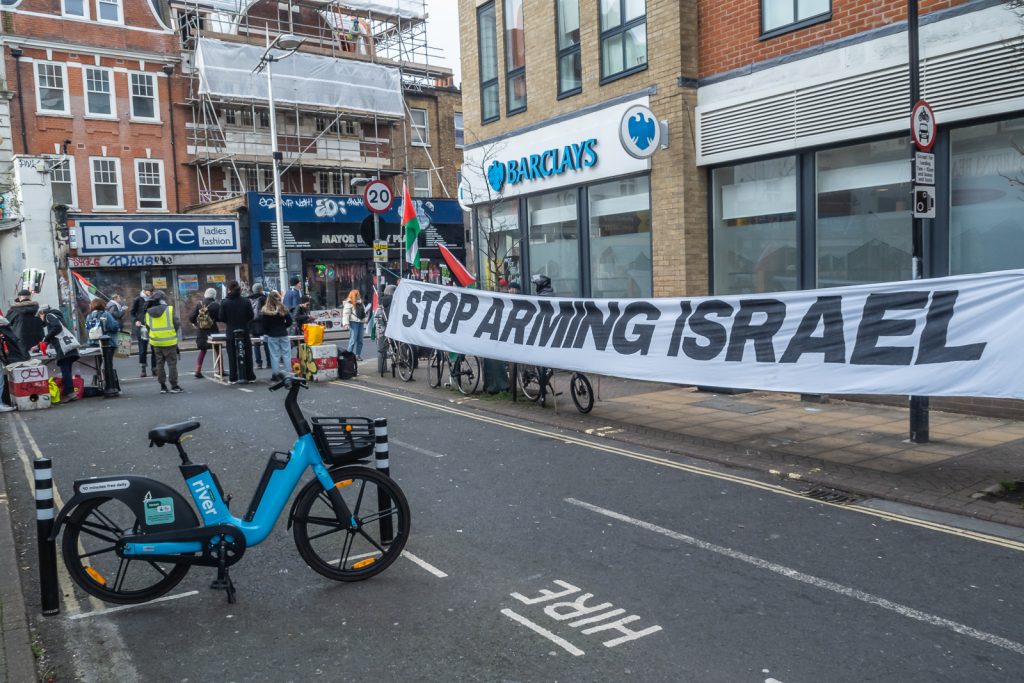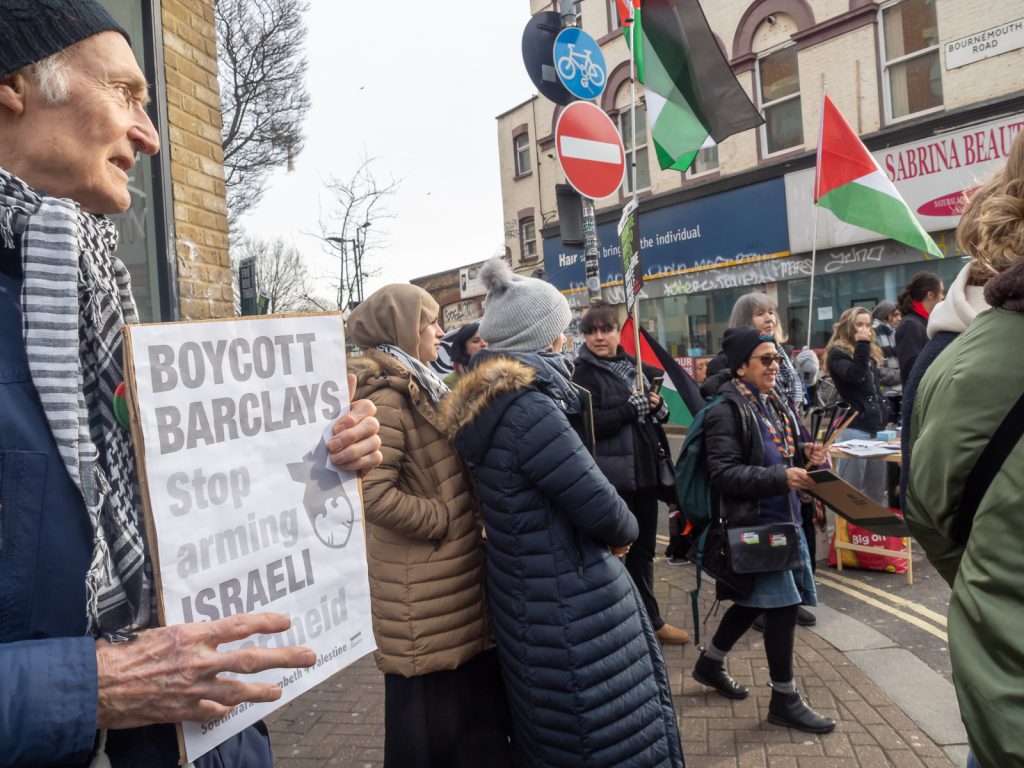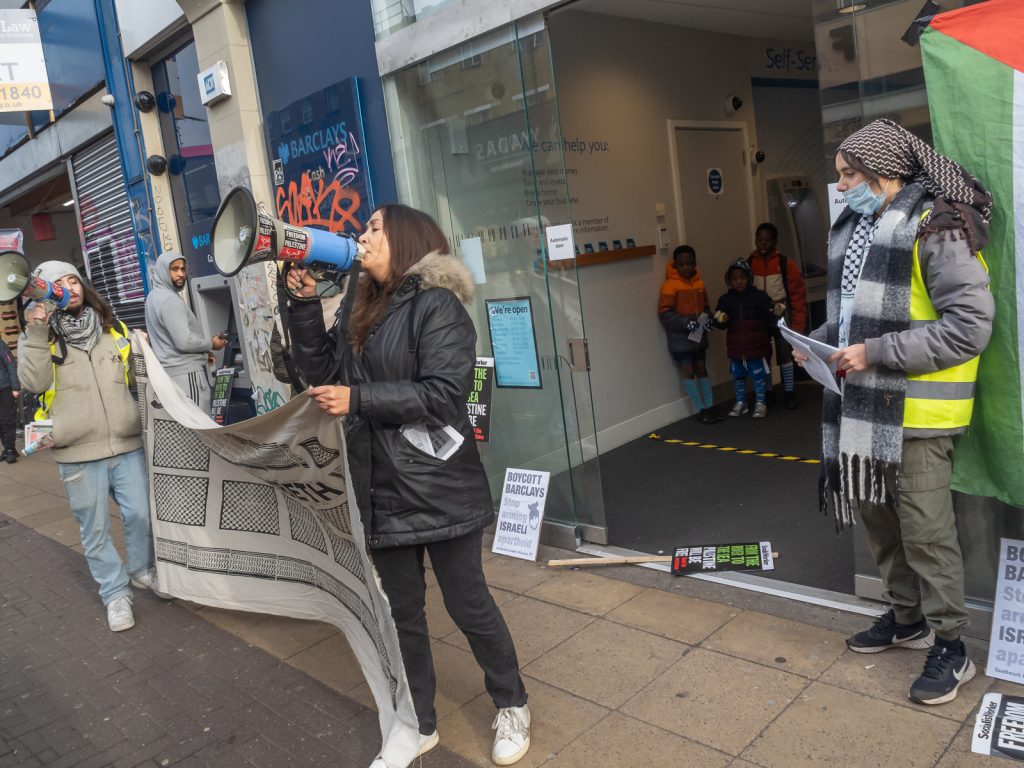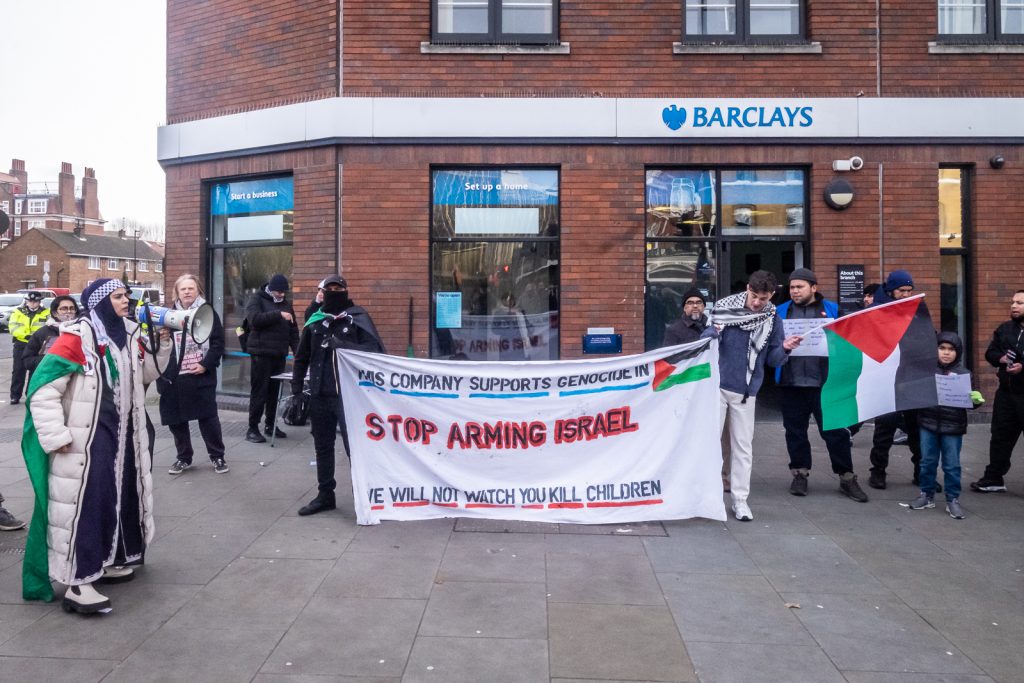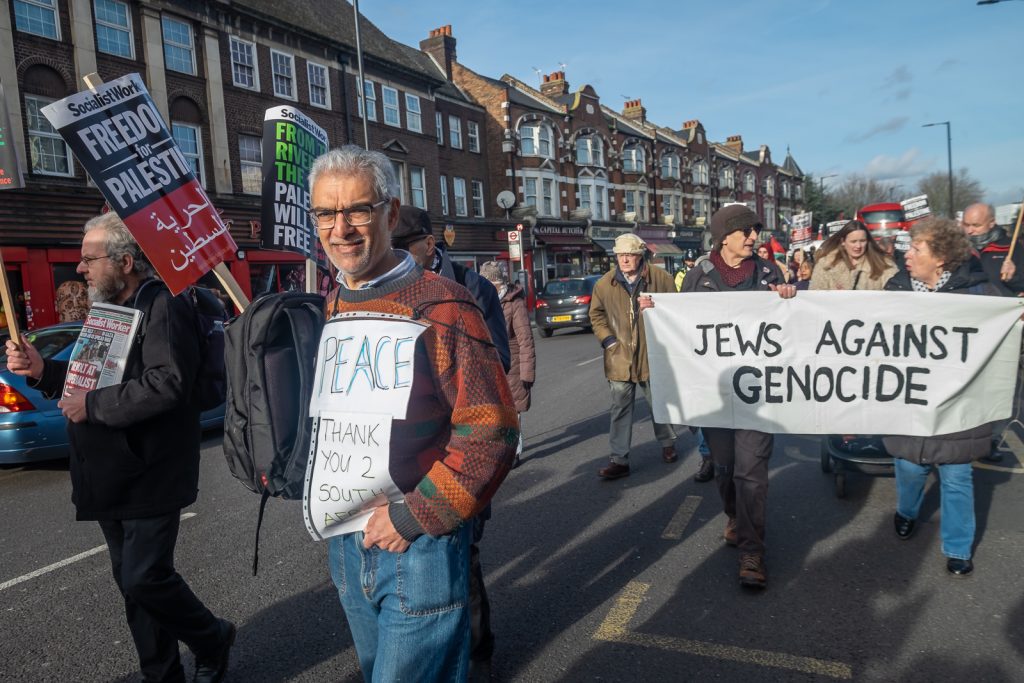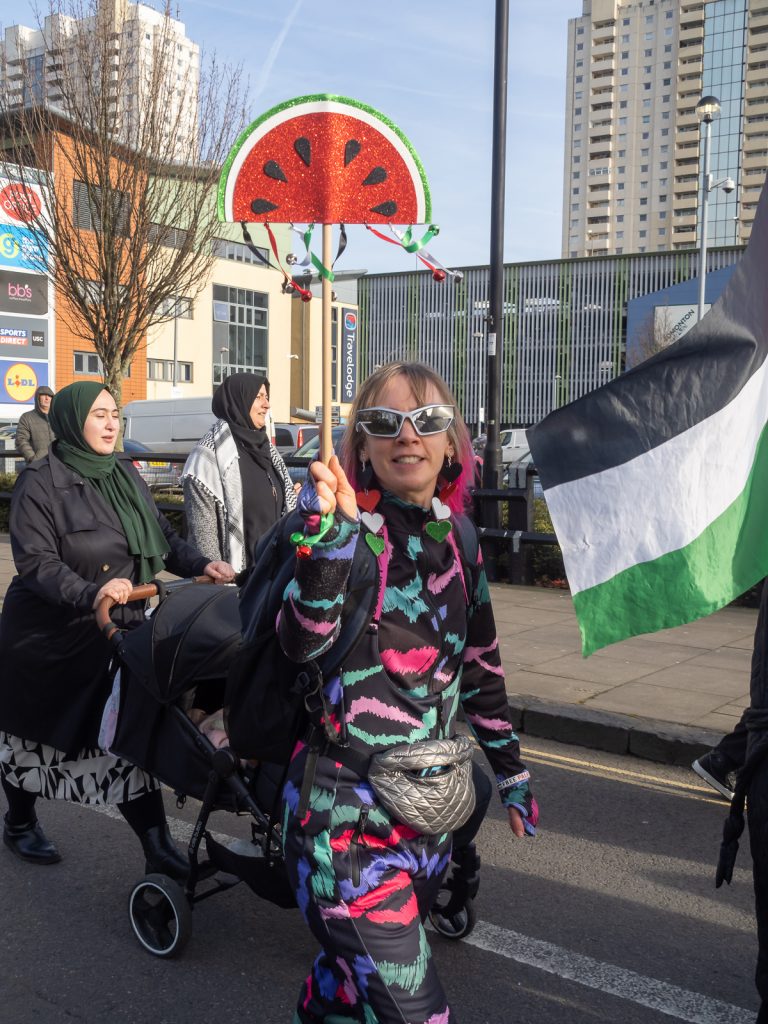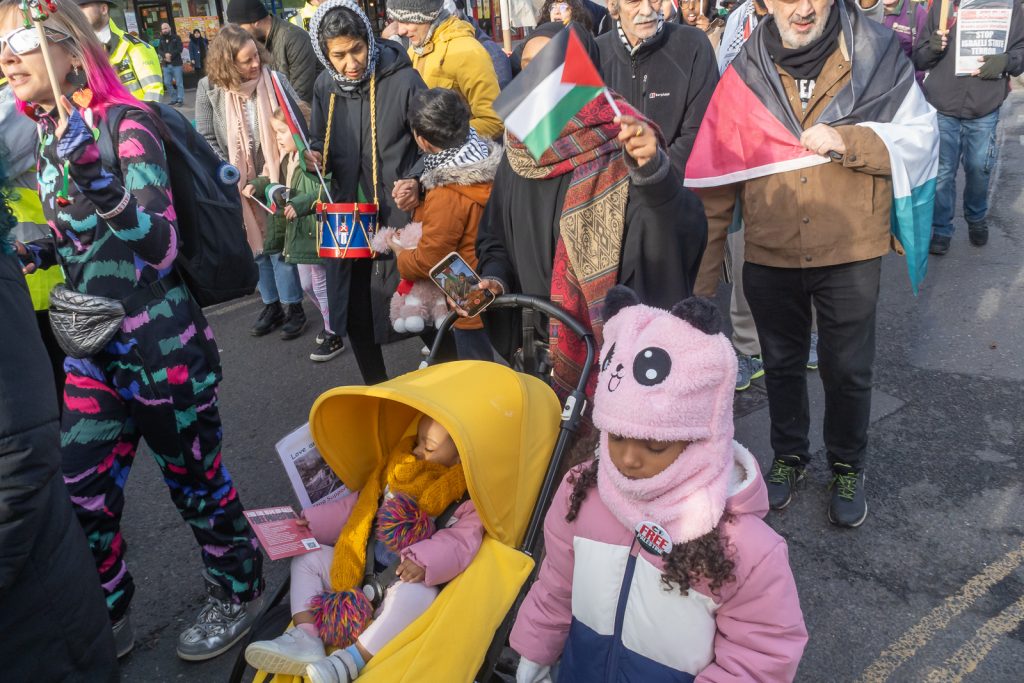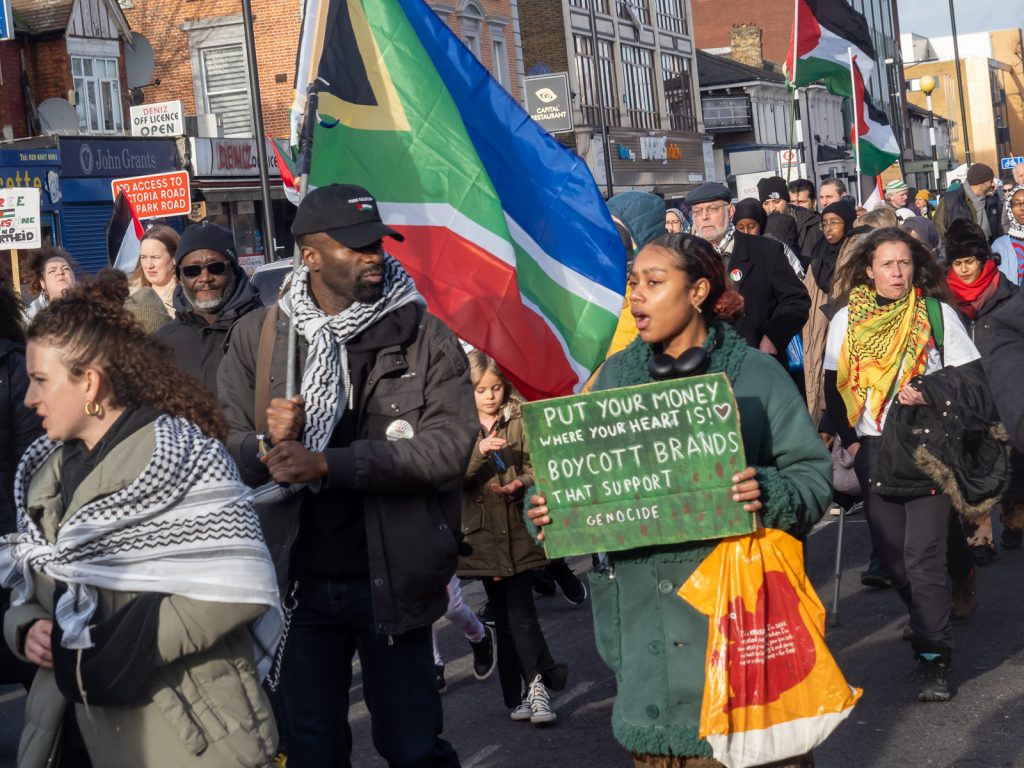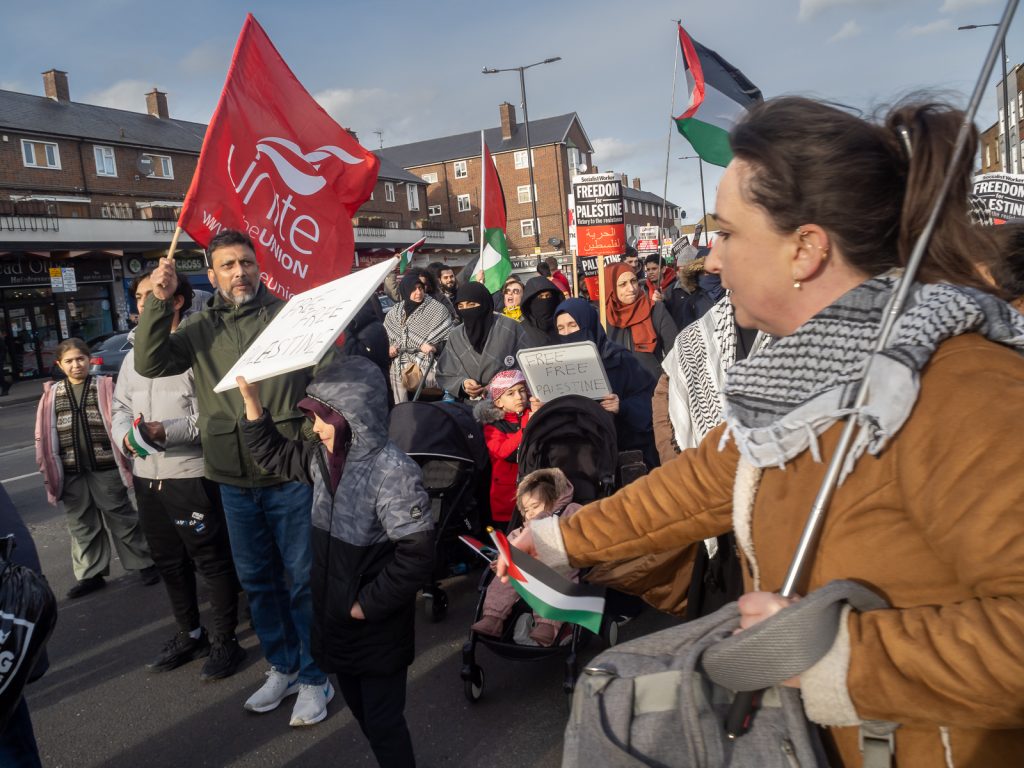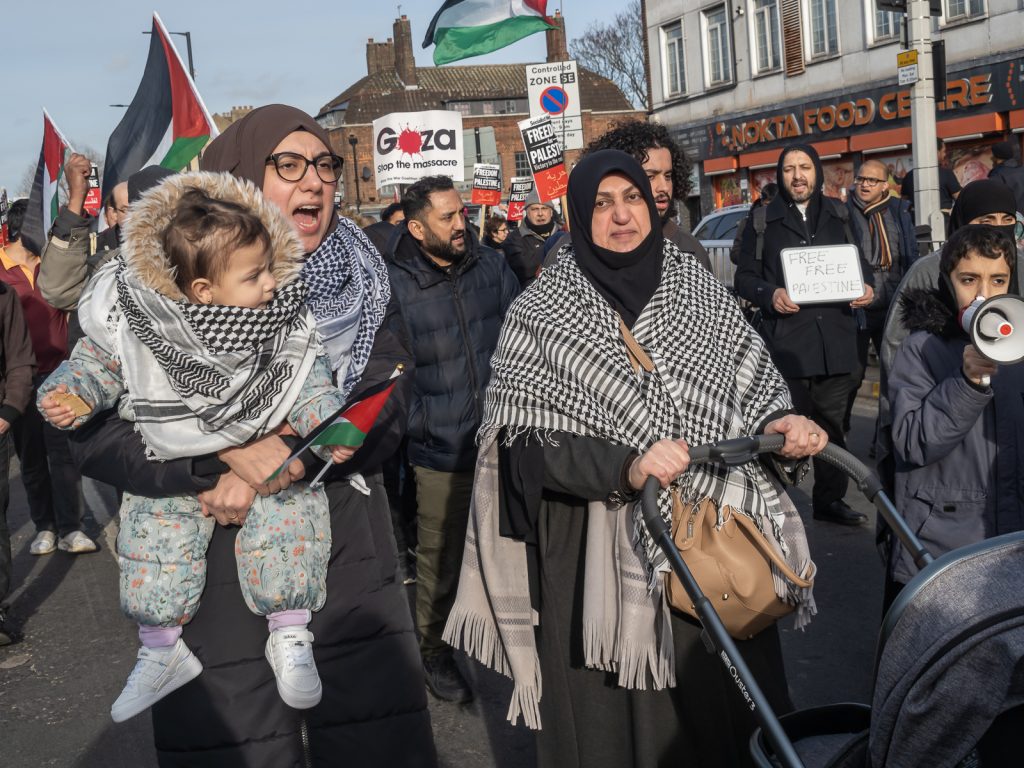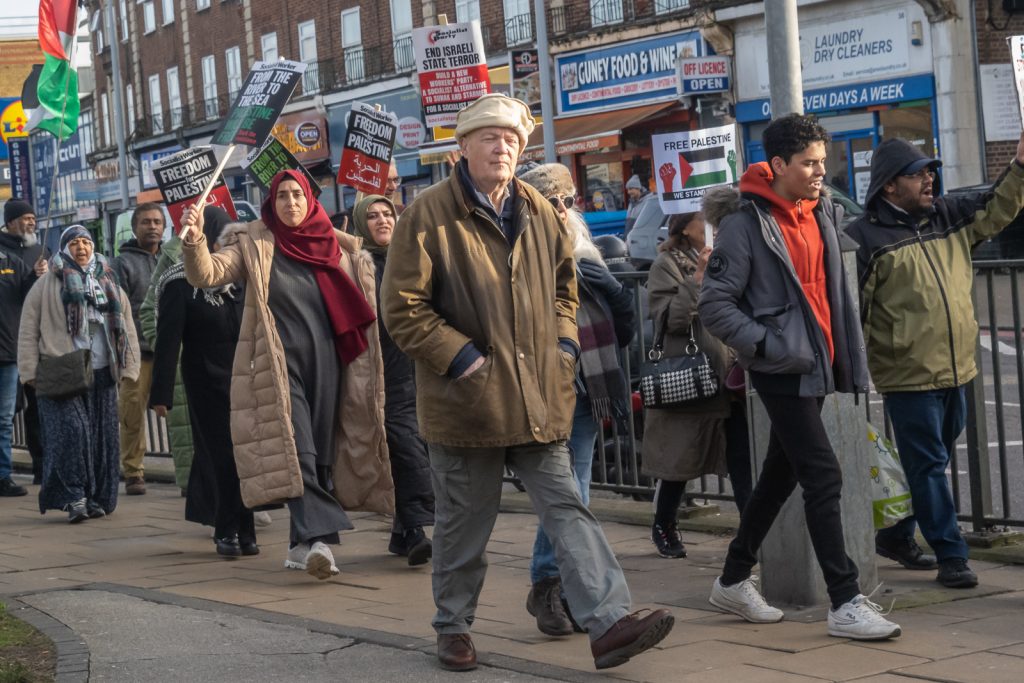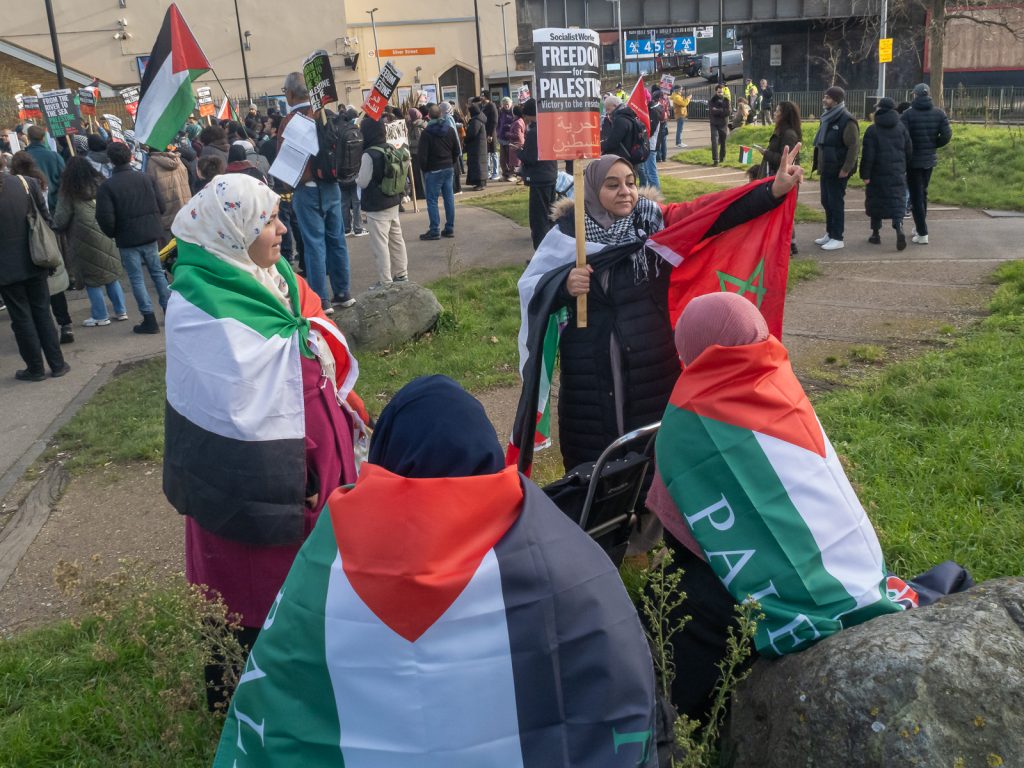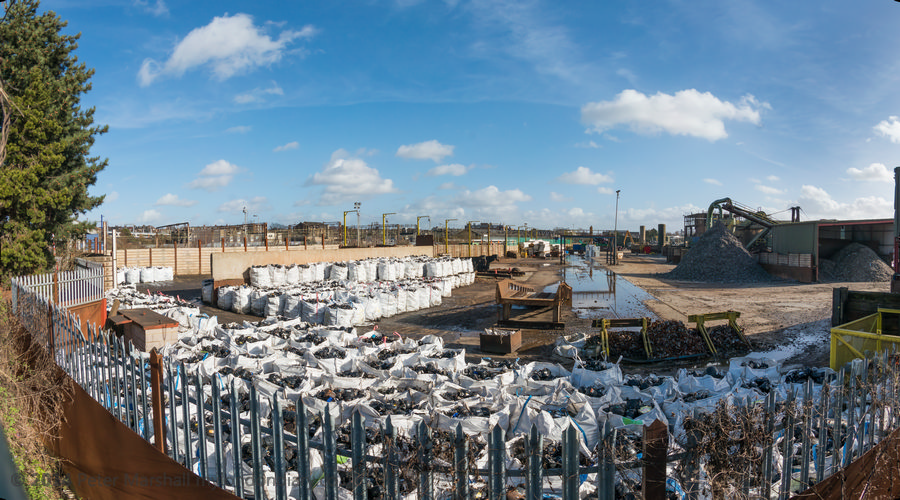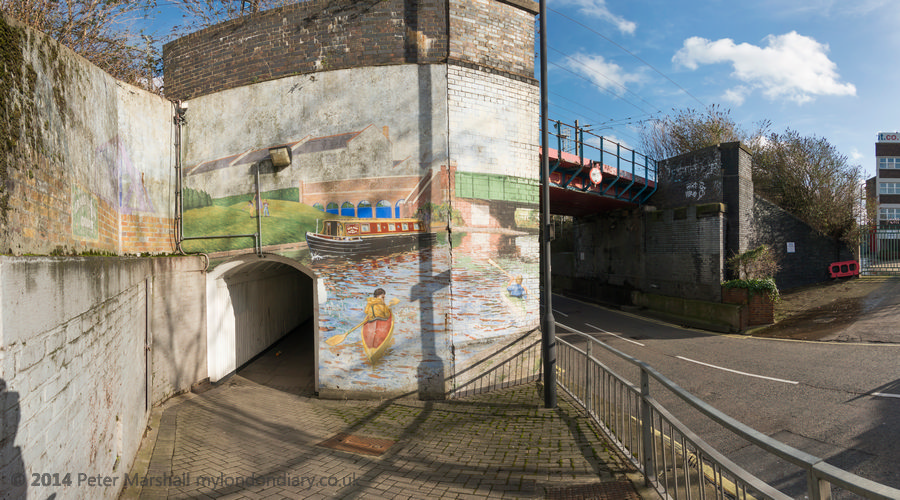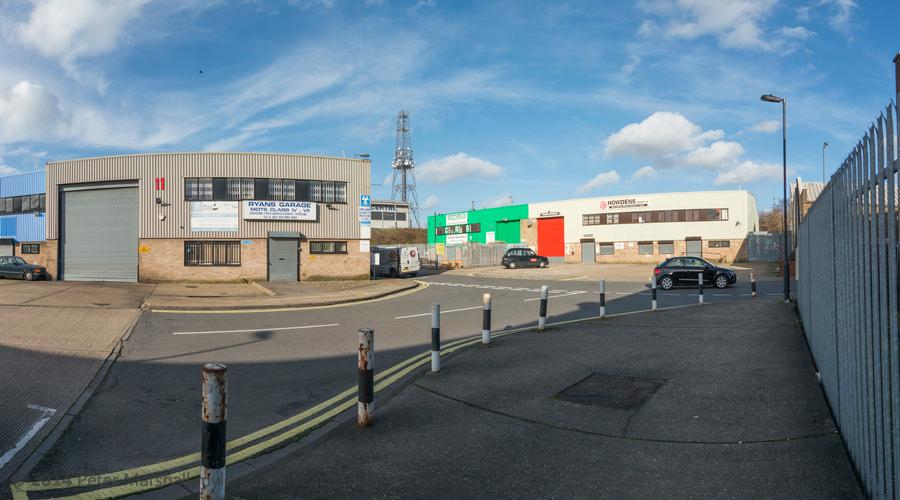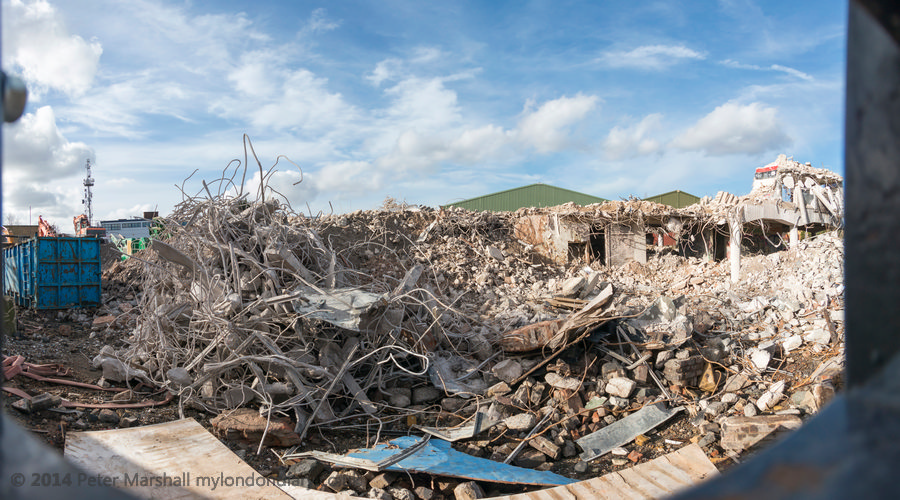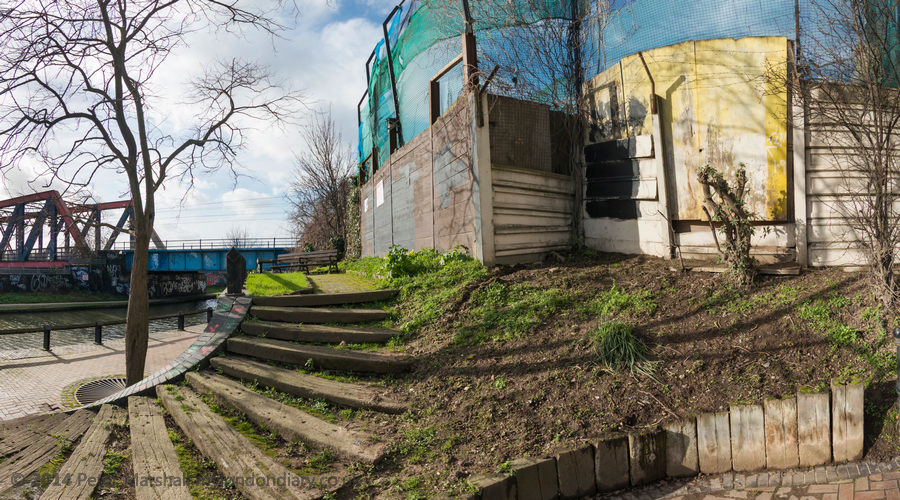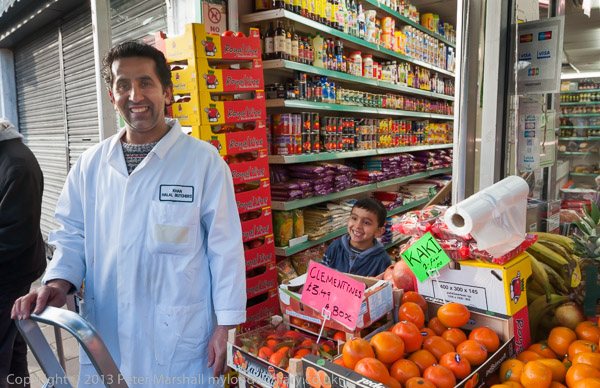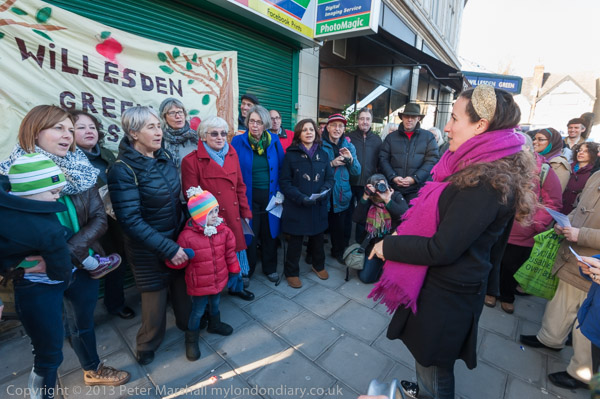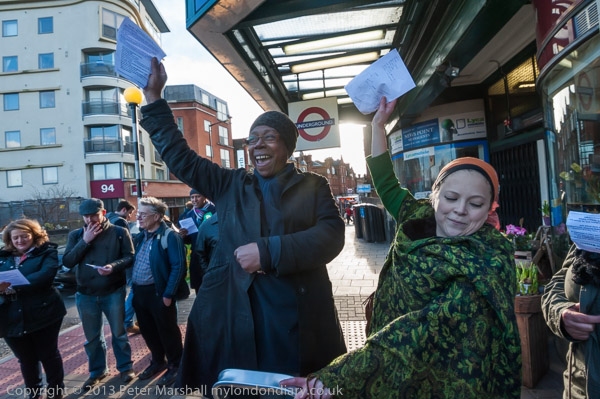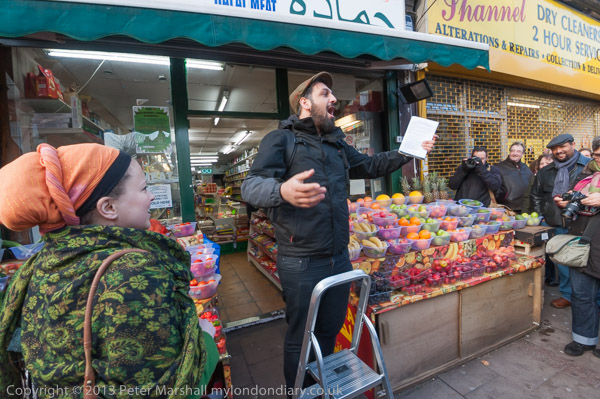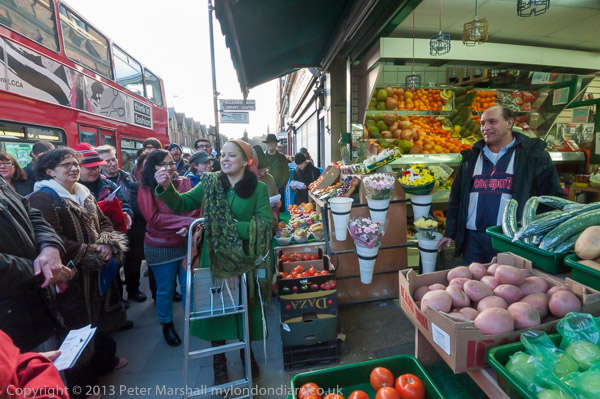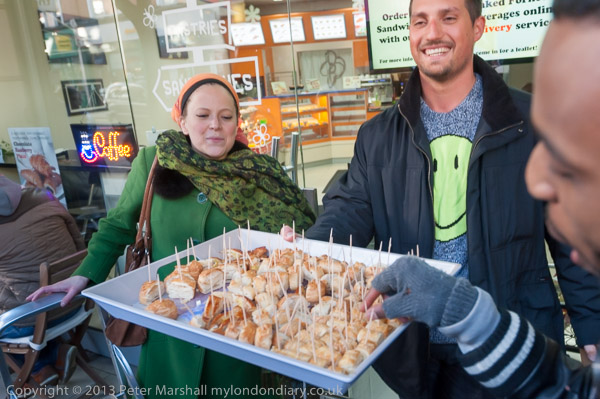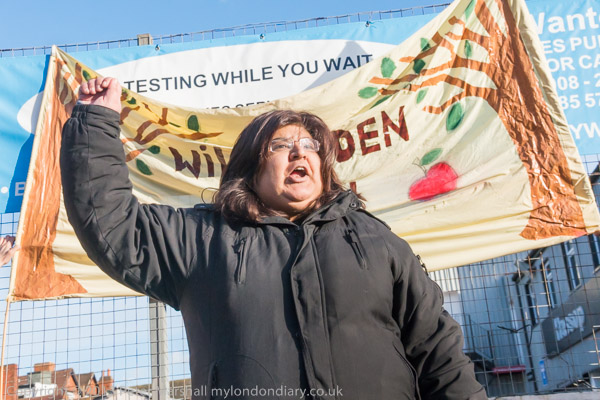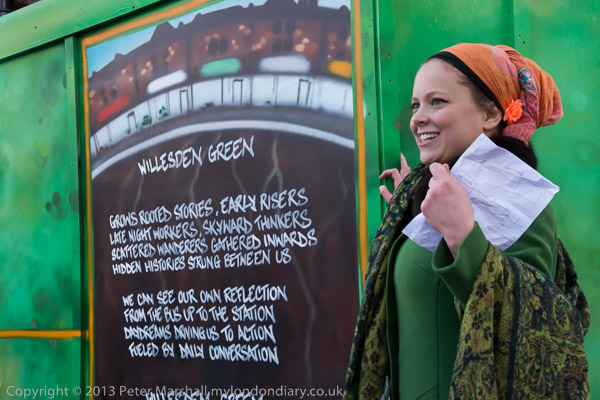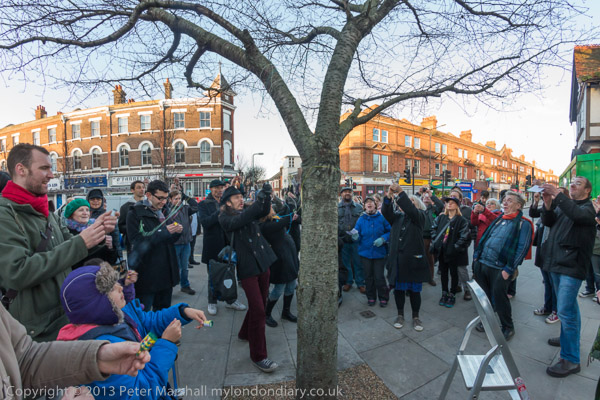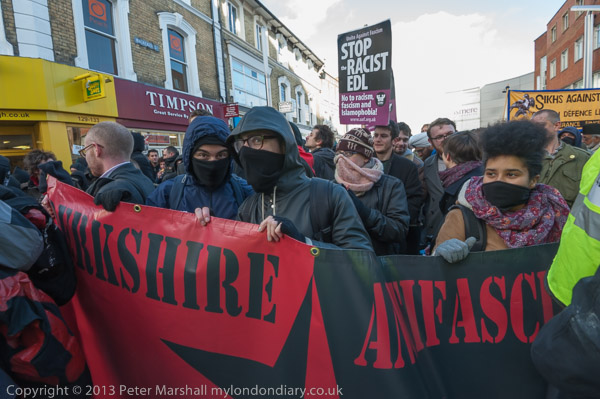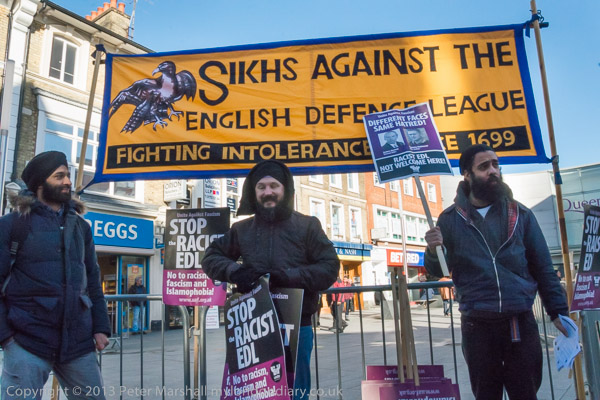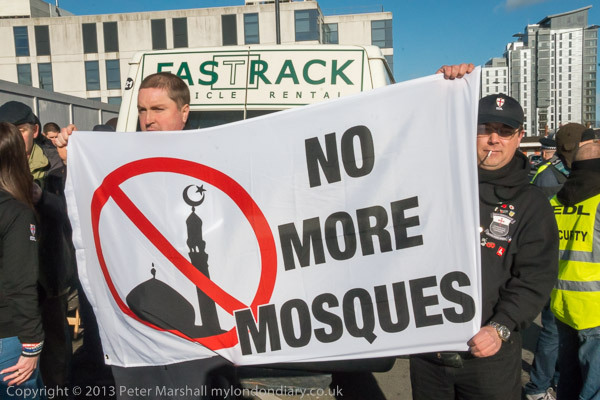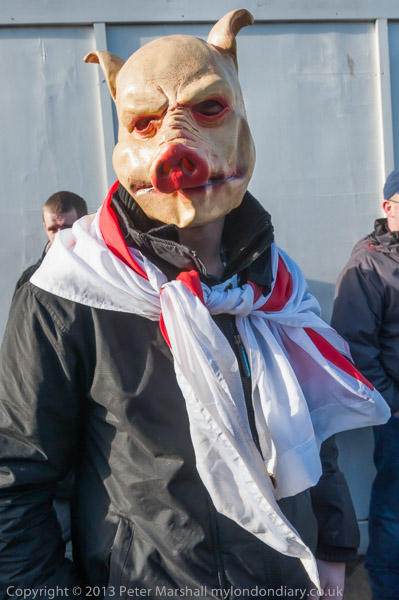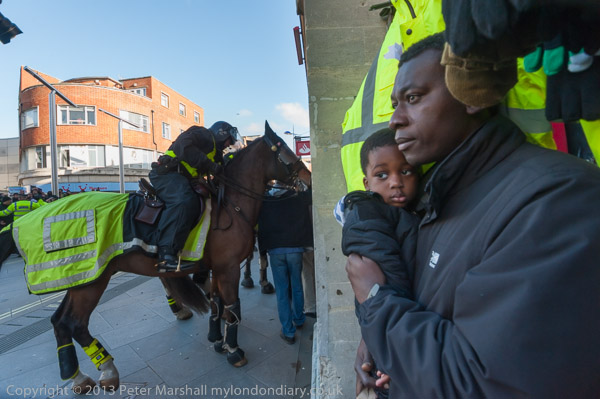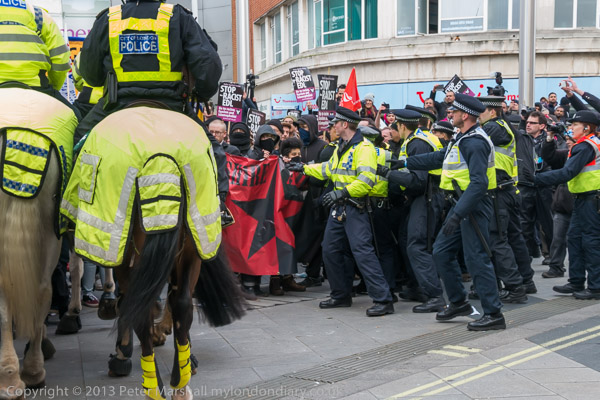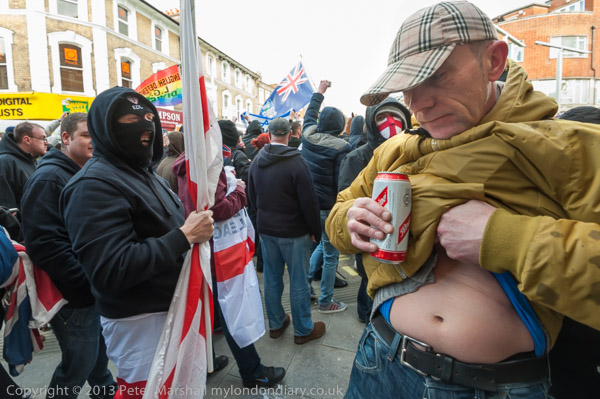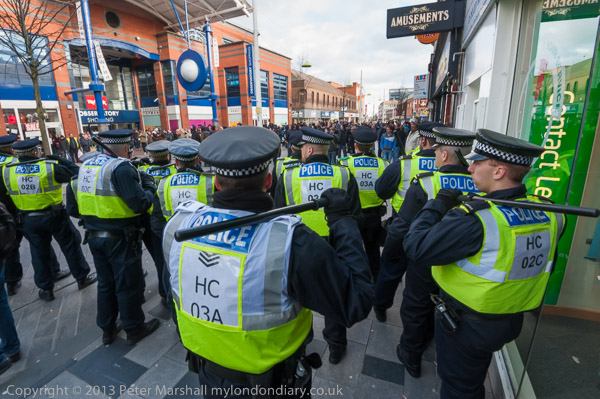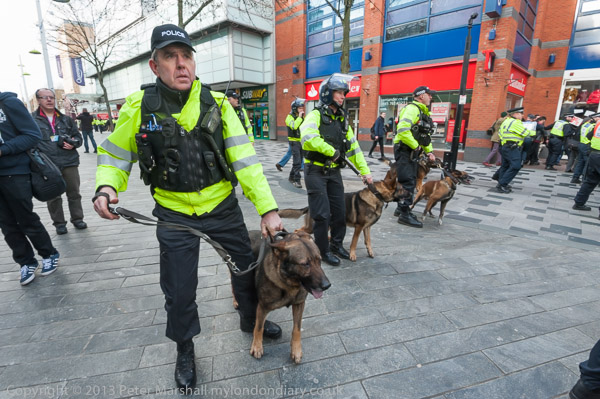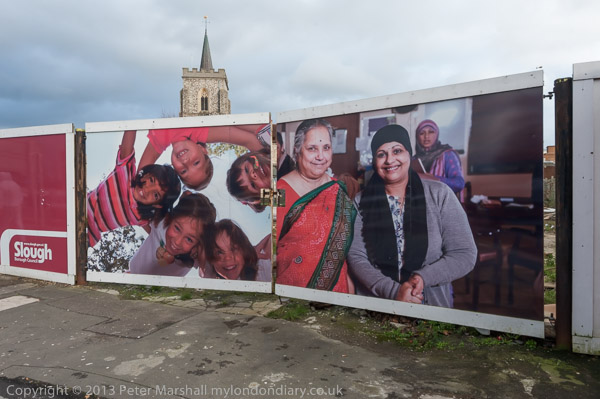Class War Victory Over Qatari Royals – Thursday 8th February 2018 saw a remarkable victory for Class War against the one of the richest families in the world, the Qatari Royal Family with a $335 billion sovereign wealth fund who are now one of the biggest landowners in the United Kingdom.
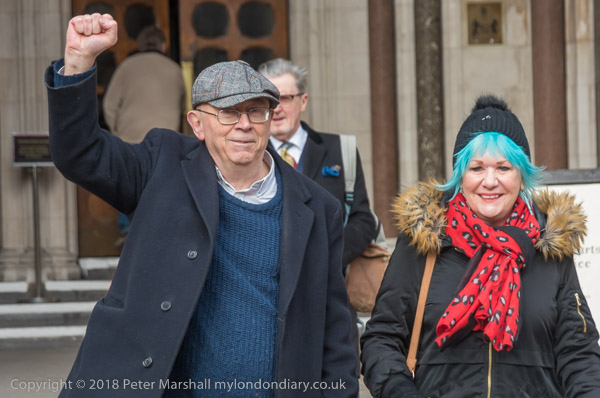
In the morning I had gone to the Royal Courts of Justice on Strand where lawyers acting for the Qatari royal family were trying to prevent a Class War protest against the ten empty £50 million pound apartments in The Shard, the tallest building in the United Kingdom. The Qataris own 95% of the property with the remaining 5% retained by its original developers Sellar Property.
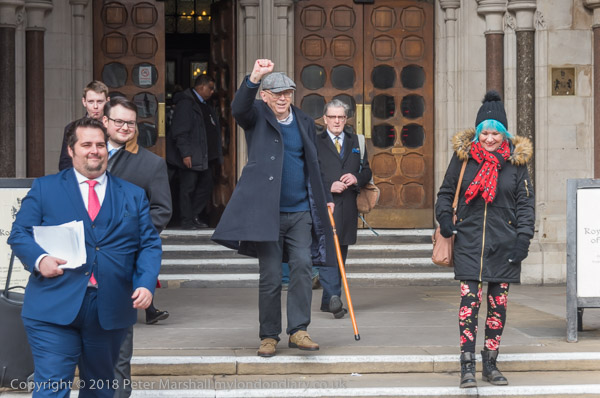
I hadn’t gone into the court but had waited outside, arriving in plenty of time to greet Ian Bone and his barrister Ian Brownhill as they emerged triumphant from the court.
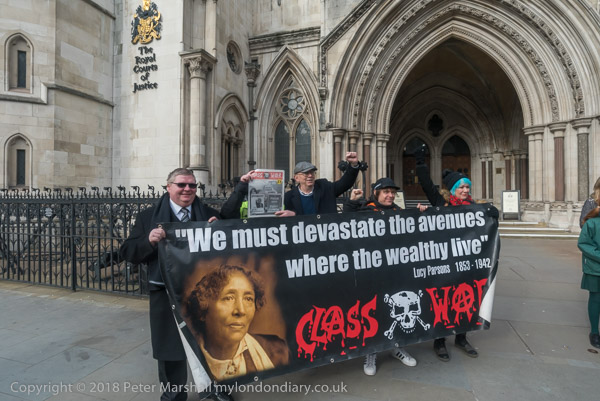
Lawyers for the Qatari royals had tried to get an injunction against protests by Bone and “persons unknown” and to claim over £500 in legal costs from the 70 year-old south London pensioner for them doing so.
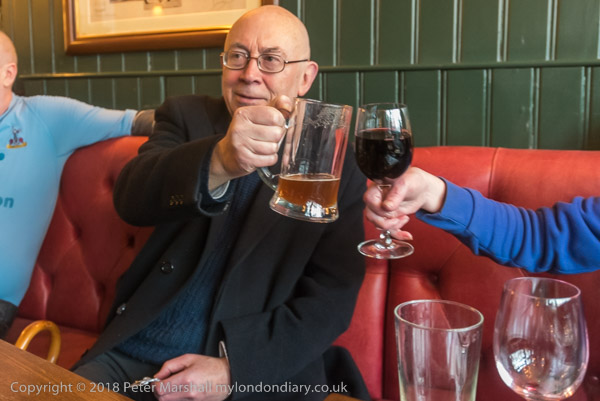
Brownhill had contacted Bone and offered to take up his case pro bono, and as soon as he contacted the Qataris’ lawyers they offered to drop the case if Class War ‘would stop attacking the Shard’. Class War would of course not agree to giving up their protest. The Qatari attempt to stifle protest led to articles in the national and international press and radio and TV coverage.
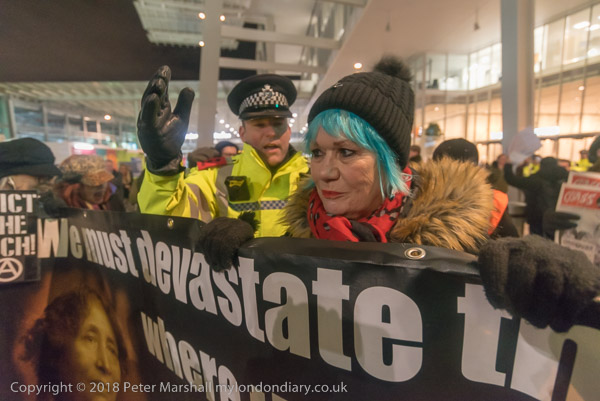
In the High Court the Qataris’ lawyers were forced to drop the attempt to ban protests and their demand for fees but Bone accepted a legal restriction on him going inside the Shard and its immediate vicinity.
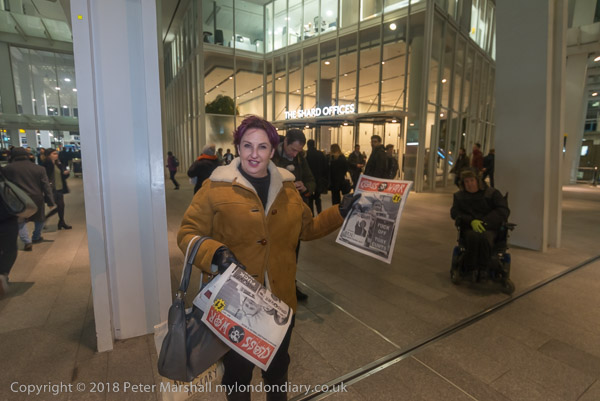
Among documents supplied to the court for the Qataris were some clearly defamatory statments about another person connected with Class War but not named in the injunction and other information which had clearly been obtained from police sources. The Head of Security at the Shard got his job after retiring as a police commander.
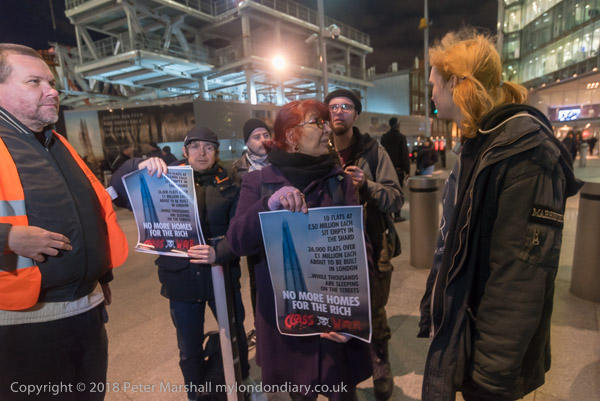
Police have over the years carried out a number of clearly malicious arrests of people from Class War during protests, aimed at harassing people engaged in peaceful protest. The cases have either been dropped before coming to court or have been thrown out by the courts.
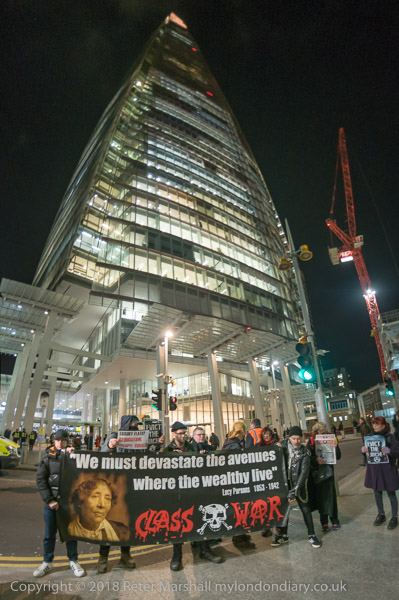
Class War’s protest went ahead as planned, pointing out that the ten £50 million pound apartments in the Shard have remained empty since the building was completed.

There appeared to be several times as many police as the protesters outside the Shard, as well as a large number of security men and plain clothes police, along with two men with search dogs when the protesters arrived. It seemed a huge overkill for what was always intended – and was – an entirely peaceful but noisy small protest.
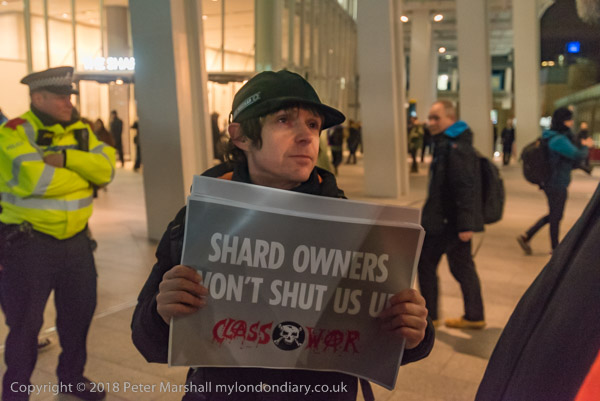
Ian Bone’s health problems meant he would not in any case have attended the protest, and the other protesters were careful to remain outside the boundary of the Shard which is marked by a metal line in the pavement.
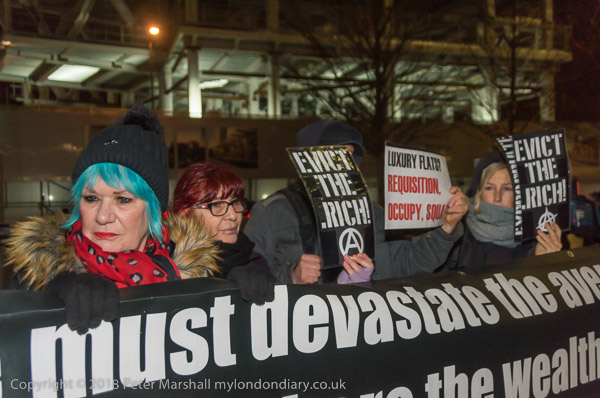
Despite this police still tried to move them away to the other side of the road, making the patently spurious claim that they were causing an obstruction to commuters attempting to enter London Bridge station. it was very clear that it was the police were obviously causing a rather larger obstruction than Class War.
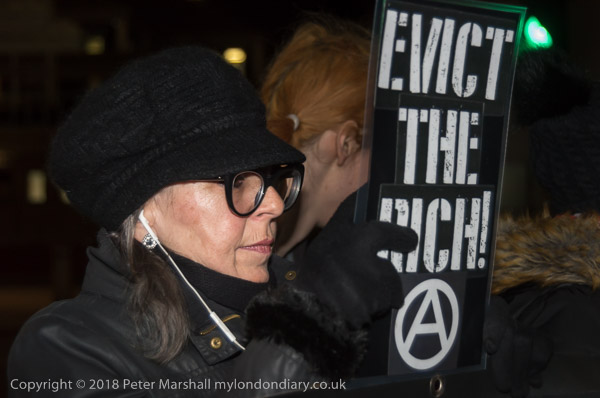
The protesters pointed out that there are now a huge number of empty properties in London at the same time as a huge housing crisis – at the time including over 100 families from Grenfell who were in temporary accommodation.
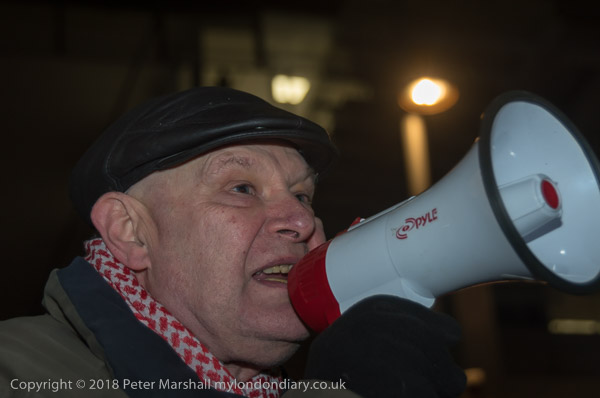
There are large developments of high-prices flats taking place, totally unaffordable for those in housing need, many of which are bought simply as investments to take advantage of rising house prices and remain empty all or most of the year.
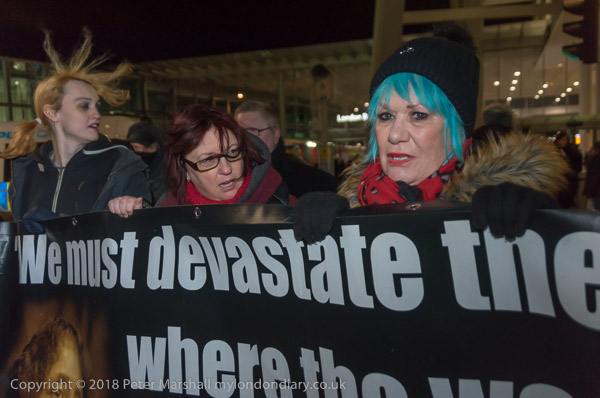
In 2018 there were plans to build 26,000 more flats costing over a million pounds each, including many on former council estates being redeveloped and replacing social housing – when thousands are sleeping on the streets and councils have huge housing lists. Currently in 2023 both Lambeth and Newham have over 35,000 waiting for housing and nine other boroughs have lists with over 10,000 names, with a total of over 323,000 over the whole of Greater London.
George Monbiot last Saturday wrote an important article In a world built by plutocrats, the powerful are protected while vengeful laws silence their critics. Class War in February 2018 showed it is sometimes possible to take on the powerful and win. Though the Qataris are still laughing all the way to the bank which they own anyway.
More pictures on My London Diary:
Class War protest at Shard
Class War victory against Qatari Royals
Flickr – Facebook – My London Diary – Hull Photos – Lea Valley – Paris
London’s Industrial Heritage – London Photos
All photographs on this page are copyright © Peter Marshall.
Contact me to buy prints or licence to reproduce.
